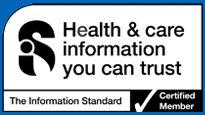Main navigation
- Health A-Z
- Hundreds of conditions explained
- Arthritis information
- Asthma information
- Back pain information
- Stress, anxiety, depression information
- Breast cancer information
- Pregnancy and baby information
- Diabetes information
- Dementia information
- Heart disease information
- Measles information
- NHS Health Check information
- Vaccinationsinformation
- Common health questions
- All A-Z topics
- Live Well
- Over 100 topics on healthy living
- Alcohol articles
- Couch to 5K articles
- Teeth and dentistry articles
- Fitness articles
- The flu jab articles
- Healthy eating articles
- Lose weight articles
- Mental health articles
- Pain articles
- Sexual health articles
- Sleep articles
- Stop smoking articles
- Tiredness articles
- Health check tools
- All Live Well topics
- Care and support
- Health news
- Health news stories unspun
- Diet and nutrition news reports
- Obesity and weight loss news reports
- Neurology and dementia news reports
- Lifestyle and environment news reports
- Pregnancy and children news reports
- Cancer news reports
- Drugs and vaccines news reports
- Heart and lungs news reports
- Medical practice news reports
- Older people and ageing news reports
- Genetics and stem cells news reports
- Mental health news reports
- Diabetes news reports
- All Behind the Headlines news
- Services near you

Services explained
See what the NHS offers
- A&E search
- Hospitals search
- GPs search
- Dentists search
- Pharmacies search
- Homecare and care homes search
- Depression search
- Maternity search
- Alcohol search
- Sexual health search
- Consultants search
- Stop smoking services search
- Urgent care services search
- All directories


